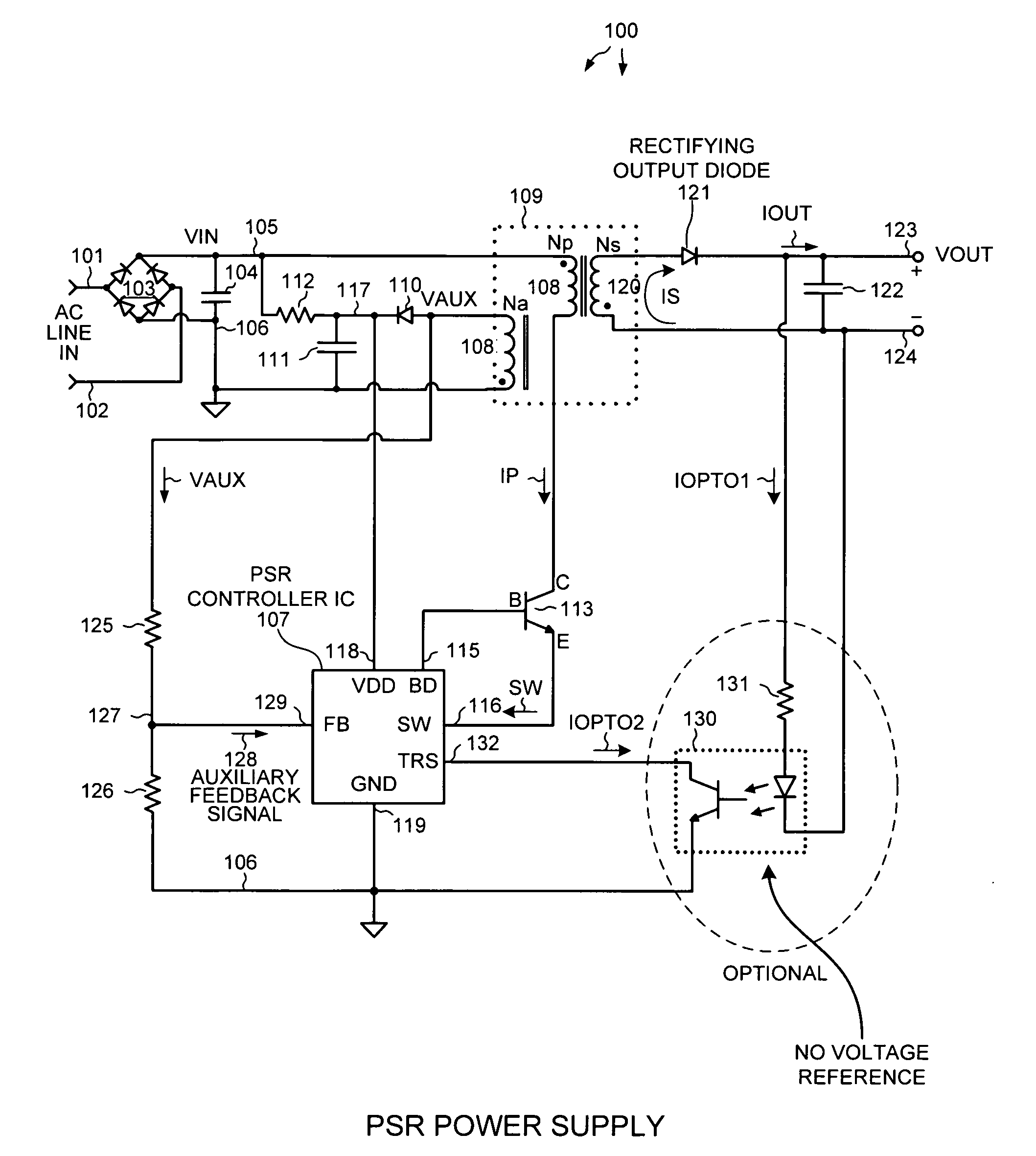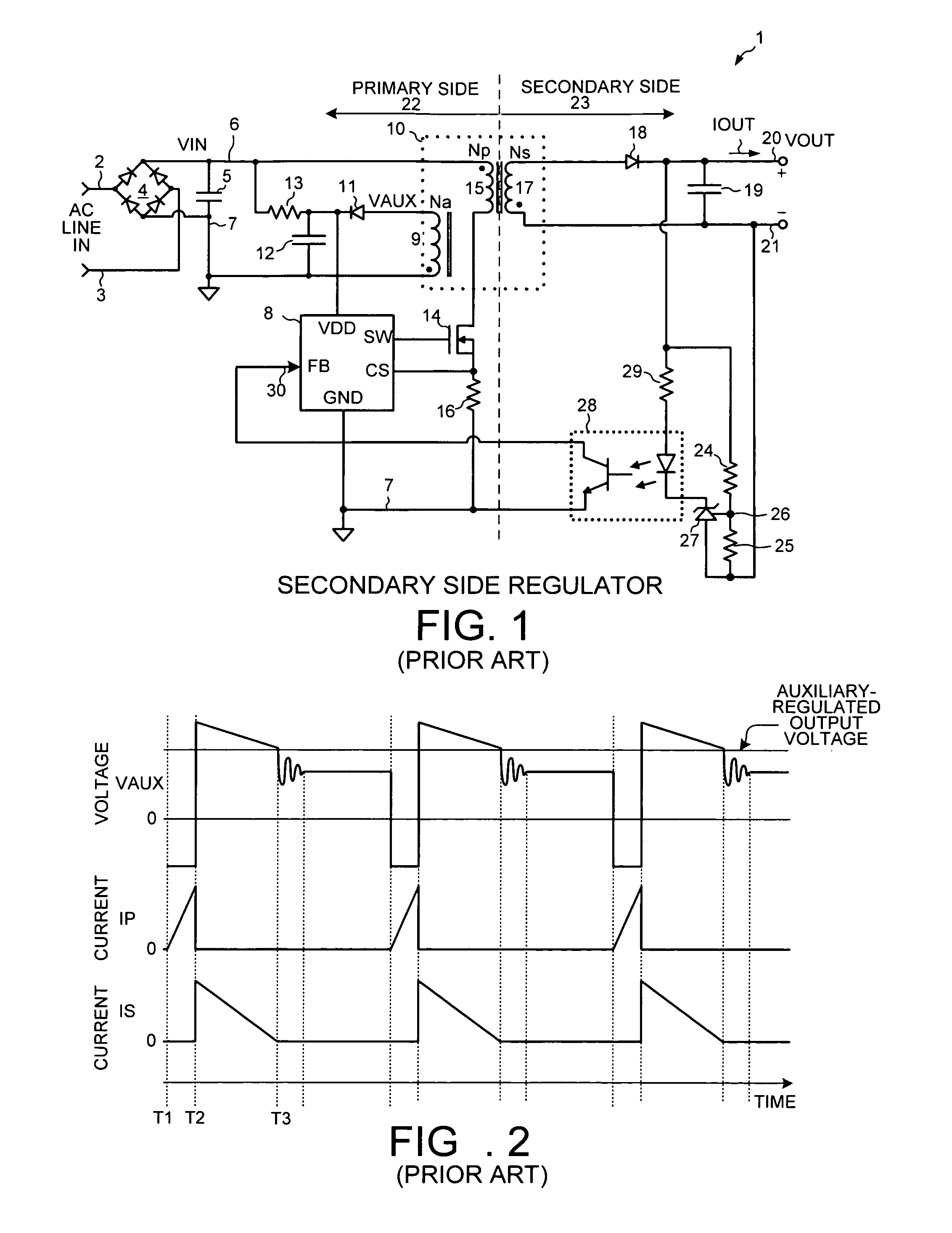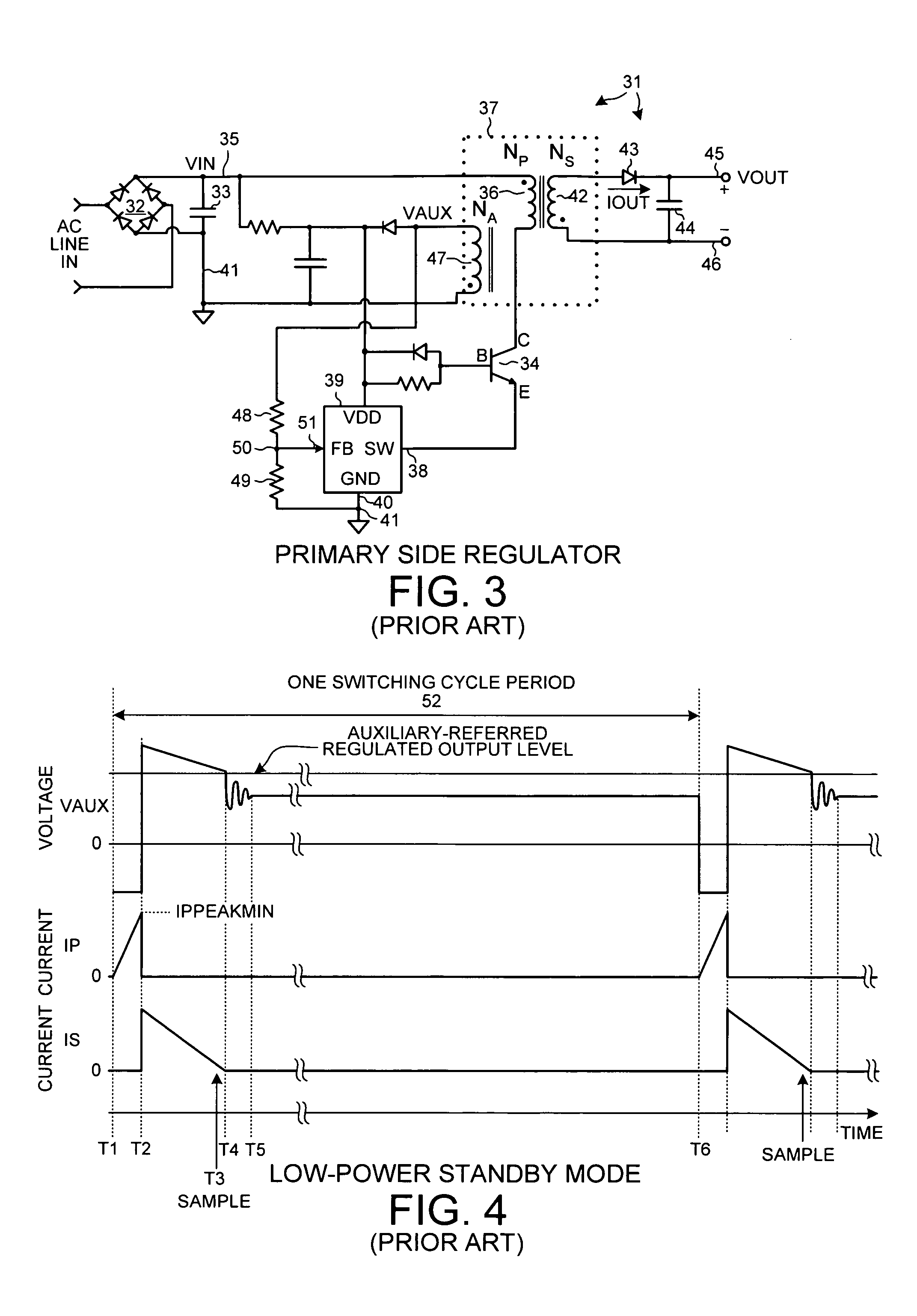Using output drop detection pulses to achieve fast transient response from a low-power mode
a detection pulse and output drop technology, applied in the direction of efficient power electronics conversion, electric variable regulation, instruments, etc., can solve the problems of secondary flyback current induced in the secondary winding, and the magnitude of the output diode is not adequate to always forward bias the output diode, etc., to achieve superior transient response, fast response, and low cost
- Summary
- Abstract
- Description
- Claims
- Application Information
AI Technical Summary
Benefits of technology
Problems solved by technology
Method used
Image
Examples
Embodiment Construction
Reference will now be made in detail to some embodiments of the invention, examples of which are illustrated in the accompanying drawings.
FIG. 5 is a block diagram of a Primary Side Regulation (PSR) flyback power supply 100 in accordance with one novel aspect. An alternating current (AC) 110-240 volt line voltage on input terminals 101 and 102 is rectified by a full wave bridge rectifier 103 and an associated smoothing capacitor 104 so that a rectified and smoothed rough DC voltage is present between the first and second input nodes 105 and 106. The voltage on first input node 105 is also referred to as the “input line voltage” or “line input voltage” (VIN). The voltage on second input node 106 is referred to as ground potential.
A PSR controller integrated circuit 107 is powered by a DC voltage supplied by auxiliary winding 108 of a transformer 109 and a rectifier involving diode 110 and capacitor 111. Supply current from node 117 is received onto PSR controller integrated circuit 1...
PUM
 Login to View More
Login to View More Abstract
Description
Claims
Application Information
 Login to View More
Login to View More - R&D
- Intellectual Property
- Life Sciences
- Materials
- Tech Scout
- Unparalleled Data Quality
- Higher Quality Content
- 60% Fewer Hallucinations
Browse by: Latest US Patents, China's latest patents, Technical Efficacy Thesaurus, Application Domain, Technology Topic, Popular Technical Reports.
© 2025 PatSnap. All rights reserved.Legal|Privacy policy|Modern Slavery Act Transparency Statement|Sitemap|About US| Contact US: help@patsnap.com



